Want to make this pool season worry-free? Check out these water safety tips
Did you know that May is National Water Safety Month? It’s also around the same time people start opening their pools, which makes for great timing. Because not only is the start of the swim season the best time to inspect your pool, it’s also the best time to check on the safety and readiness of your swimming pool environment.
So, in observance of Water Safety Month (and good water safety practices), we’re sharing a bunch of home pool safety and water safety tips in this post. And we’re covering everything from your swimming pool and equipment to general safety tips for swimmers everywhere.
Essential Water Safety Tips
and Swimming Pool Safety Guidelines
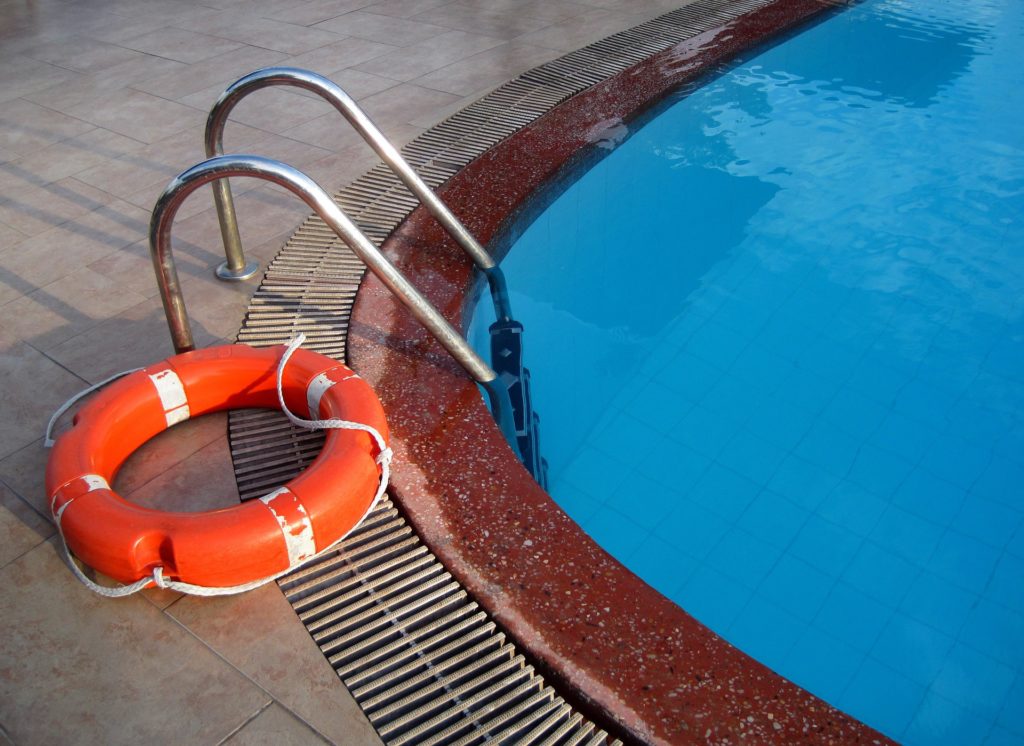


Swimming Pool Safety Guidelines
Here are a few swimming pool safety guidelines to protect you, your family, and your pool.
Use safety barriers
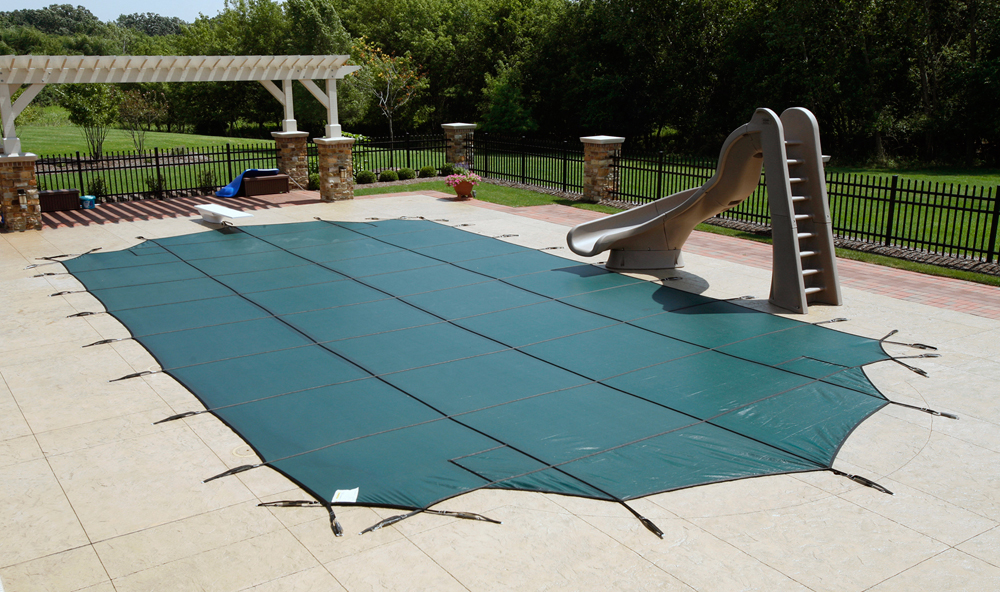


Here are a few types of safety barriers we recommend using for securing your pool:
Swimming Pool Covers
If you want to eliminate the worry of someone, or something accidentally getting into the pool, then a cover is the fastest solution. Safety covers are available in a variety of sizes, and come include highly durable straps/latches that keep the cover secured.
Most safety covers can easily support the weight of multiple people, of course, that’s just good to know. We don’t recommend throwing a party on your pool cover.
Using a pool cover not only keeps the pool safe during non-use, but it also improves your pool’s heat retention while reducing water evaporation. And if you want to maximize your pool’s heating efficiency, using a solar cover in addition to the safety cover is a wise decision.
[Want to know more about solar covers? Check out: How To Use a Solar Cover]
Self-latching/closing Safety Fence
For pool owners with children or pets, a safety fence is practically a necessity. Pool fencing is affordable, but ranges in price depending on the size of your pool.
Choose transparent fencing that’s at least 4 feet tall — enough to give you a clear view of the pool while preventing unwanted entry.
Ladders
If you have an above ground pool, then a folding ladder is a wise investment. It replaces the stock ladder your pool came with and offers a lot more versatility. When the pool is in use, simply unlock the ladder, and unfold it into the pool. Then, when you close the pool, simply unlock the ladder again and fold it up.
The folding ability lets you easily limit access to your pool without the trouble of removing the ladder. Of course, if you have an inground pool, then removing the ladder is your next best option.
Keep floatation devices and life-saving equipment near the pool
You may own a bunch of floaties, noodles, and other floatation devices, but are they close to the pool and readily accessible?
If not, they should be. Having life-saving equipment close to the pool is a cardinal rule all pool owners should pool. Because whether it’s a swimmer in distress or a novice in need of assistance, being prepared is everything.
So make sure to keep all floatation devices and life-saving equipment in an easy-to-find spot, close to the pool.
Use alarms
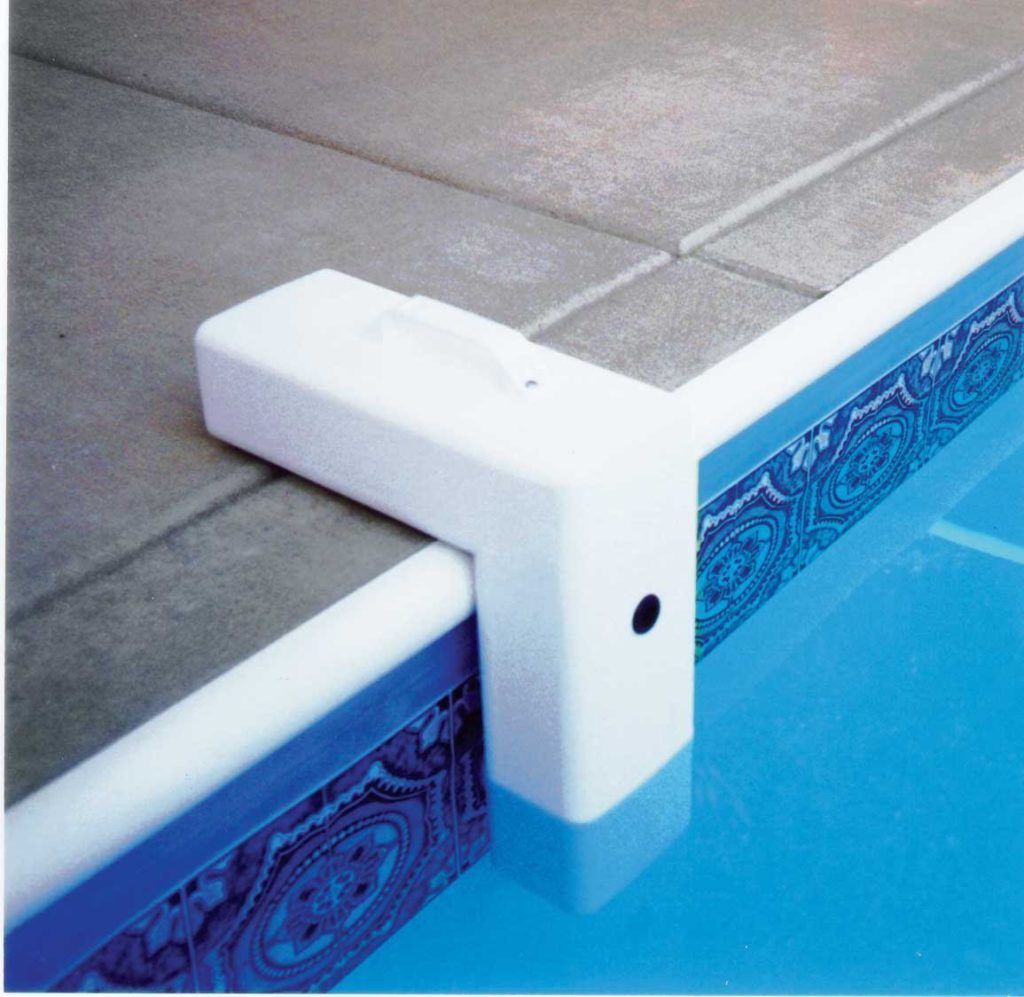


Did you know that you can add an alarm system to your pool? One that lets you know the second anything or anyone enters the water.
These tools are incredibly useful, affordable, and great for adding that one extra layer of security to your pool.
We recommend checking out the pool alarms offered by SmartPool and PoolGuard
Additional note: You can also set up alarms for any doors or windows that lead to the pool. It’s an easy way to know when someone is around the pool area or trying to get to it.
Use safety compliant drain covers
It may not be talked about enough, but having outdated or non-compliant drain covers in your pool can pose major safety risks.
Whether you’re a professional swimmer or a newcomer, the suction force of a drain pipe is enough to trap you underwater. This is why most states require VGB compliant/anti-entrapment drain covers, which greatly limit the pull from drain pipes.
It’s also important to check the expiration date of your cover, which happens to be 3-4 years for most brands. You can see if your cover needs replacement by checking the date stamped on it.
Inspect your pool equipment
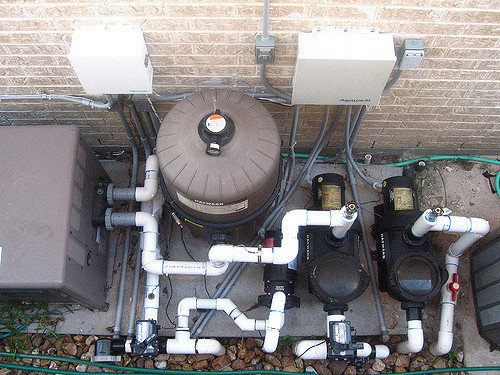


A clean and healthy swimming pool is the result of good pool maintenance habits, and a bunch of equipment working together in the background.
That said, with regular pool use, your equipment goes through natural wear and tear. So, it usually requires a bit of maintenance here and there. More times than not, maintaining your pool equipment is as simple as keeping it clean.
But for more complex equipment, like your pool heater and pool pump, maintenance is a little bit different.
Here’s all of the equipment that should be inspected before opening your pool:
- Pool filter: make sure the filter is clean and displaying proper PSI
- Swimming pool heater: check that the heater is turning on, free of damage, and actually heating your water
(An annual maintenance safety check defends against what your eyes can’t see) - Pool pump: make sure the pump is starting, pumping water, and keeping cool as expected
Here are some helpful resources:
Keep the pool clean
It may surprise you to know just how much the cleanliness of your pool impacts its safety.
So first, let’s break it down:
On a chemical level…
A chemically imbalanced pool not only causes irritation and rashes for swimmers, but it also breaks down your swimming pool and pool equipment at an accelerated rate. On top of that, it results in you spending more on chemicals and expensive repairs down the line.
On a physical level…
A pool that’s filled with leaves and twigs is difficult to balance, and that’s because debris absorbs chemicals. And if it isn’t cleaned out of your pool, then eventually, it ends up in your skimmer baskets and filter.
A dirty filter, as you know, isn’t very effective at keeping your water clean. And over time, it recycles excess debris back into your pool, sending it through your pool heater along the way.
But what’worse is the fact that a dirty filter causes your pool pump to work twice as hard, which also means it overheats twice as fast.
Long story short, keeping your pool clean saves you a lot of time, money, and headaches down the line.
Some helpful, related information:
[Struggle to keep up with pool maintenance? Our FREE pool care schedule is the perfect tool for you]
Water Safety Tips (For the swimmers)
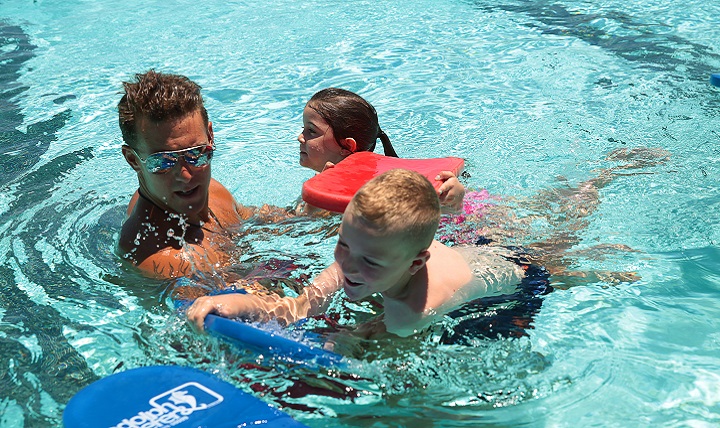


Water Safety Statistics & Facts
Before jump into the water safety tips, there are a couple of water safety statistics we’d like to share with you. These facts aren’t meant to instill fear, but to raise awareness on the importance of water safety.
These statistics are sourced from the National SAFE KIDS Campaign and the National Safety Council, via StanfordChildrens.org:
- An average of 830 ages 14 and under drown every year
- Drowning is the second leading cause of unintentional death among children ages 1-4,
and 10-14 years old - The majority of child drownings occur in the child’s home pool
- 33% of at-home drownings occur at the homes of friends, family, and neighbors
- Over 3,600 drowning-related injuries occur to children per year
- Over half of infant drownings occur in bathtubs
- Most drownings (and near drownings) occur from May-August (summer and spring)
- Most fatal drownings occur in South and West United States
General Water Safety Tips
Learn CPR



Regardless of how safe your pool is, knowing CPR is still invaluable. Because situations may arise when a distressed swimmer can’t be rescued fast enough and experiences temporary drowning. And usually, the person closest to the pool at the time is the first to assist a drown victim.
This person can be you, or your 50-pound five-year-old who just learned how to swim last week.
The point: CPR is an essential skill that everyone should know. It can very well save a life; and on that note…
Learn basic pool life-saving skills
The only thing better than knowing CPR is having your basic life-saving skills mastered. No, we’re not saying that you should become a certified lifeguard (although we certainly aren’t stopping you). Rather, we’re advising that everyone knows the basics of pool life-saving.
So here are some useful pool-life saving tips to get you started:
- Step one: call and shout for help
- Use a ring buoy, shepherd’s crook, or telescopic pole to safely reach a distant swimmer
- When rescuing, lay flat on the pool deck to distribute your weight and prevent yourself from being pulled in
- Use a retractable floatation device (with rope) when doing a throwing assist to the swimmer
- Keep your distance from the edge
- If you have to dive in, use a large floatation device to keep you, and the swimmer safe
Use the buddy system
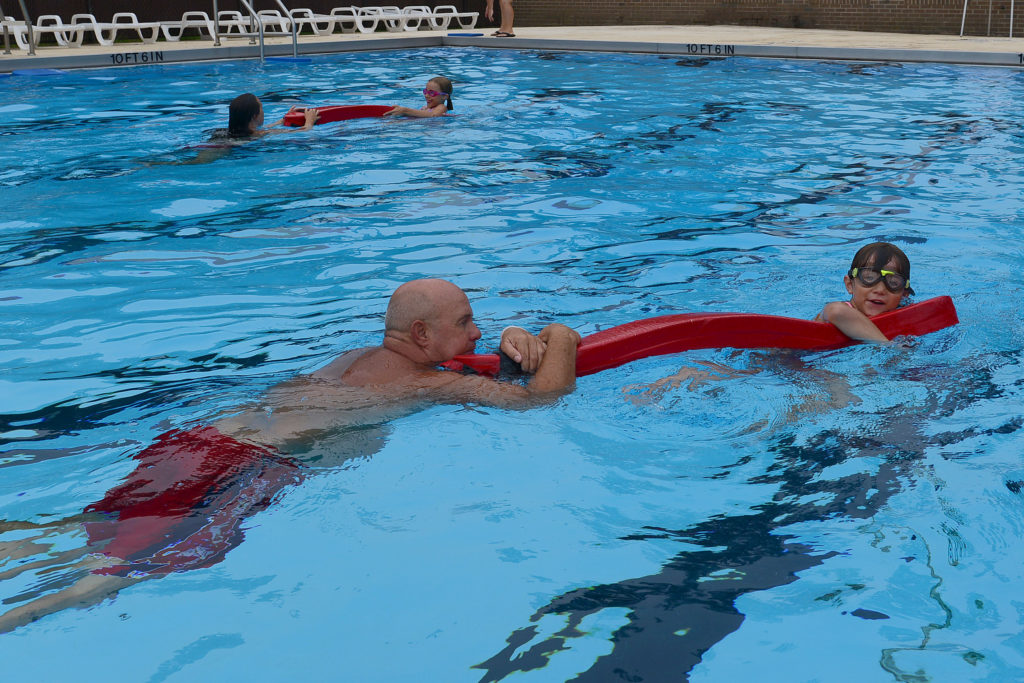


An inconvenient cramp can strike anyone, whether they’re 5 or 50, hence why using the buddy system is always a good idea. You may be a great swimmer, know plenty of life-saving techniques, and can easily reach the shallow end.
But that doesn’t mean you shouldn’t prepare for the unexpected. Swimsuits can get stuck on ladders and drain pipes, heavy objects can fall into the water and strike a swimmer, and muscle fatigue can take its course. Sounds like an exaggeration, but it happens.
The point here is, whenever possible, use the buddy system. Because it never hurts to have a helping hand.
Be mindful of drains and water outlets
Although most pools these days are built for safety from the start, it’s still important to be mindful of drain pipes and other suction points within the pool. Under normal conditions, most suction ports are harmless and perfectly safe.
But a pool experiencing pressure issues can have much stronger suction force, hence why it’s always important to keep your filter system clean year round.
Keep a first aid kit nearby
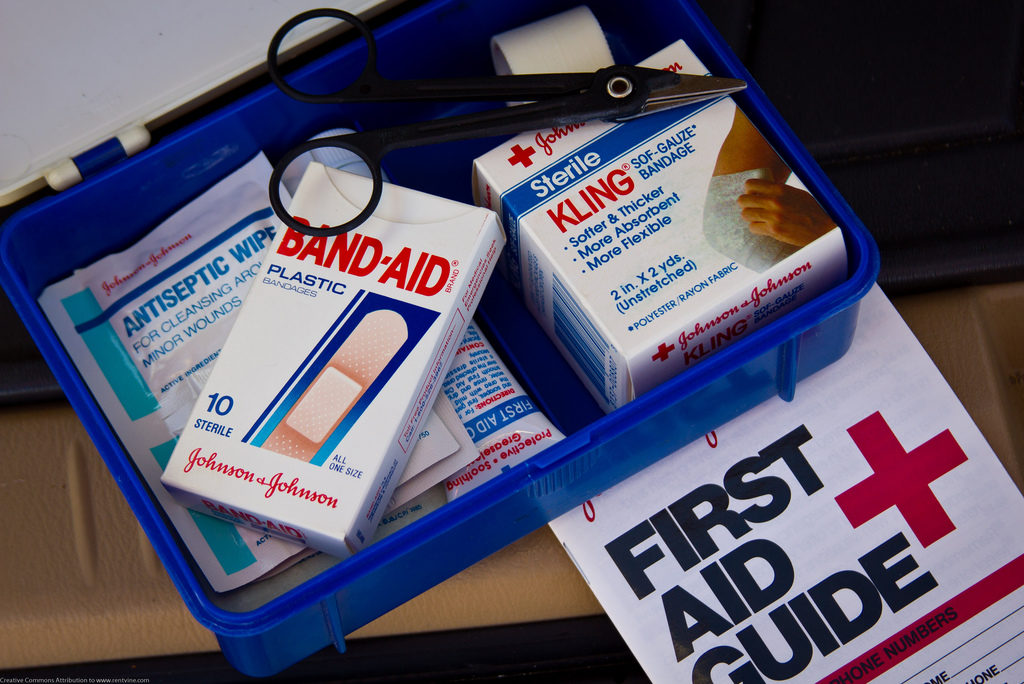


Scraped knee? Small cut? No problem, just grab the handy first aid kit you keep near the pool.
And if there isn’t one there already, then surely you can see the value in not having to walk through the house, dripping wet, for over 10 minutes searching for a band aid.
Instead, save yourself and everyone else the time, effort, and trouble, and keep a fully stocked first aid kit near the pool.
A few things for your first aid kit to include:
- Waterproof bandages (all sizes)
- Butterfly bandages
- Roller bandages
- Sterile gauze pads
- Antiseptic ointment
- Antiseptic wipes
- Non-latex medical gloves
- Aspirin
- Ibuprofen
- Instant cold pack
Water Safety Tips for Parents
Teach water safety early
You’re never too young to know your way around a pool. If you’re a parent with younger children, take some time to go over everything mentioned in this post with them. And if you’re a seasoned swimmer, it still doesn’t hurt to get a refresher on your water safety knowledge.
Because simply put, knowing basic water safety can prevent most situations from ever happening around the pool, which is advantageous within itself. So if you want to further build upon your water safety knowledge, consider enrolling in a water safety course at your local Red Cross.
Teach everyone how to swim
This is one of those tips that seems obvious, but accidentally gets overlooked far too often.
The younger a person can learn how to swim and get comfortable in the water, the better. Because the older we get, the harder it gets to squeeze in the time to work on the skill. And if there’s one skill you want to have if you ever find yourself on a capsizing fishing boat, it’s swimming.
Okay, maybe that was a bit much, but nonetheless, swimming is an essential skill. It’s used for everything from recreation and exercise to therapy and rescue.
But the main takeaway here is that knowing how to swim can, in some situations, be the difference between surviving and drowning. So make it your mission to ensure that you children and the people you care about take the time to develop their swimming skills.
Keep children supervised at all times
Even if they know how to swim, and even if you’ve seen them swim the length of the pool a hundred times, keep your eyes on the kids.
Building on the buddy system philosophy, everyone benefits from having a friend nearby when swimming. Because you never know when a painful cramp can kick in, or when fatigue can sweep you off guard. And even if there’s a lifeguard around, a pool can get busy, and it may become hard for them to keep an eye on everyone.
Hence why in those situations, it’s best to appoint a designated water watcher. Which is also ideal during times when you’re forced to step away for a moment. This is someone whose sole responsibility is keeping a watchful eye on all the swimmers, making sure they’re being safe and having fun.
Have inexperienced swimmer wear life vests
Life vests add that extra layer of safety needed to put most parents with children at ease. Of course, even when using a life vest, following good water safety practices is still important.
When purchasing a lifejacket for an inexperienced swimmer, opt for coast guard approved vests.
Keep climbable furniture away from the pool
You may have the pool fence set up correctly, but that patio chair next to the ladder looks like a stepping stool to a curious child.
So, make sure to keep any climbable furniture and decor far away from the pool. This includes but is not limited to chairs, tables, boxes, buckets, and even plant potters.
Keep toys away from the pool
Although you may think nothing of it, to a child, a few shiny and colorful toys around the pool are practically an invitation. It immediately creates an environment for playtime in a child’s mind.
This can start with harmlessly racing toy cars down the pool deck, and quickly escalate to jumping into the pool after the one that fell in.
So eliminate the risk, and keep toys and anything else that might grab a child’s attention out of the pool area.
Establish basic rules
Just like the public pool at the park, your swimming pool should come with a short list of simple rules. They should be easy to follow and aimed around keeping the pool a safe environment for everyone.
Here are a few rules you may want to have for your pool:
- No running on the deck
- No horseplay (adults, adhere at your own discretion)
- Remove jewelry
- No loose clothing
- No diving in the shallow end
- Keep the pool gate closed
Take the safe swimmer pledge



This last steps really solidifies the importance of water safety for kids. The pledge consists of a few short lines that summarize how to stay safe in the pool.
Once a child recites the pledge, you can reward them with the Safe Swimmer certificate (download it here), which adds a nice touch of authenticity to the experience of learning water safety.
Straight from NationalWaterSafetyMonth.org, here’s the “I’m A Safe Swimmer” pledge:
“I pledge to never swim alone. I pledge to never play or swim near drains or suction fittings. I pledge to always dive feet first. I pledge to obey the pool rules.”
Swimming Pool Safety Guidelines: Recap
- Use safety barriers
- Keep flotation devices and life savings equipment near the pool
- Use alarms
- Use safety compliant drain covers
- Inspect your pool equipment
- Keep the pool clean
Water Safety Tips: Recap
- Learn CPR
- Learn basic swimming pool life-saving skills
- Use the buddy system
- Keep a first aid kit nearby
- Be mindful of drains and outlets
For the parents:
- Teach water safety early
- Teach everyone how to swim
- Keep children supervised at all times
- Have inexperienced swimmers wear life vests
- Keep climbable furniture away from the pool
- Keep toys away from the pool
- Establish basic rules
- Take the “I’m a Safe Swimmer” pledge
Closing thoughts
When it comes to keeping everyone in the pool safe, good water safety habits are key. Just how far you go to maximize your pool’s safety depends entirely on your situation, but what’s important is knowing how.
Bottom line: following the swimming pool safety guidelines and water safety tips outlined in this post will ensure that you, your pool, and all the incoming swimmers are ready for an enjoyable and stress-free swim season.
But if you haven’t opened your pool yet, you may want to check out these guides:


